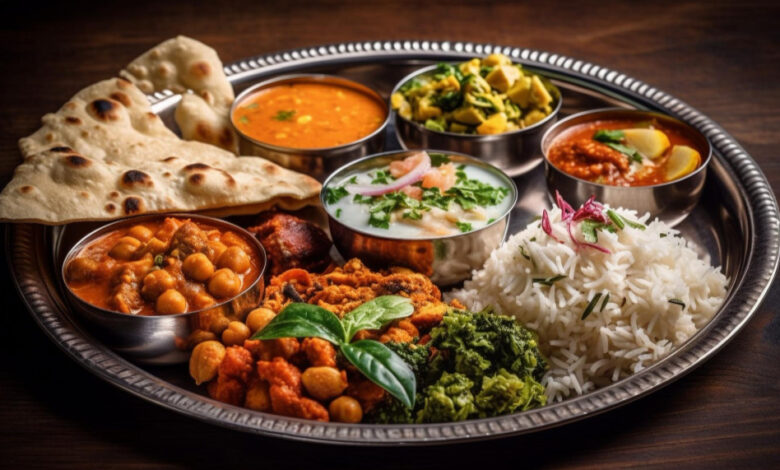Is Indian Food Gluten-Free: Uncovering Dietary Secrets

Embarking on a culinary journey through the vibrant world of Indian cuisine, only to be halted by the looming question: ‘Is Indian food gluten-free?’
Join us as we unravel the tapestry of flavors, traditions, and dietary concerns to discover how to savor the rich, gluten-free treasures hidden within this captivating culinary landscape.
Introduction
In recent years, the gluten-free diet has gained popularity for various reasons, including dietary preferences and health concerns. For those who love Indian cuisine, the question often arises: Is Indian food gluten-free?
The answer isn’t a simple yes or no but rather a matter of understanding the ingredients and making informed choices. In this article, we’ll explore the world of Indian cuisine and discover which dishes can be enjoyed gluten-free, along with some essential tips for a delightful gluten-free Indian dining experience.
The Gluten Conundrum
Before delving into the specifics of Indian dishes, it’s crucial to understand what gluten is and which ingredients commonly contain it. Gluten is a protein found in wheat, barley, rye, oats, semolina, and malted barley. These ingredients are commonly used in various Indian preparations, so being mindful of their presence is essential.
Gluten-Free Indian Delights
Now, let’s explore some mouthwatering gluten-free Indian dishes that can satisfy your taste buds without triggering gluten-related concerns:
Tandoori Chicken
The addition of spices like paprika and cayenne pepper in the marinade gives Tandoori chicken its vibrant red color. This dish is not only gluten-free but also packed with flavors that tantalize the taste buds, making it a favorite among both locals and international food enthusiasts.
Tikka Masala
Chicken tikka masala is another delectable option. As long as no wheat-based thickeners are added, chefs typically make this curry gluten-free, with its creamy and flavorful profile. Additionally, it’s a popular choice among those who prefer a milder spice level in their Indian dishes, making it a great option for individuals with a more sensitive palate. The marinated chicken pieces, soaked in yogurt and spices, simmer in a tomato-based sauce, offering a harmonious blend of flavors that can appeal to a wide range of taste preferences.
Dal Makhani
Furthermore, dal makhani is not only delicious but also packed with protein, making it a nutritious option for vegetarians and vegans alike. Its aromatic blend of spices and slow-cooked lentils creates a flavorful dish that appeals to a wide range of palates, making it a popular choice in Indian cuisine.
Vegetable Biryani
Vegetable biryani, a fragrant rice dish with mixed vegetables and aromatic spices, is often gluten-free. Just confirm with the restaurant that they haven’t added any wheat products. Additionally, it’s a delightful option for both vegetarians and vegans, offering a rich and flavorful dining experience suitable for various dietary preferences. You can enhance the taste by pairing it with a side of cooling raita or a squeeze of fresh lemon juice for a burst of zesty flavor.
South Indian Favorites
South Indian cuisine offers a delightful array of gluten-free options, including spicy lentil soup (Sambar), tangy aromatic soup (Rasam), thin rice crepes (Dosa), soft steamed rice cakes (Idli), savory semolina porridge (Upma), and flattened rice dish (Poha). These dishes showcase the rich flavors and textures of South Indian culinary traditions, making them a popular choice for those with gluten sensitivities.
Gluten-Free Roti
If you’re a fan of flatbreads, you can still enjoy them without gluten. Roti made from gluten-free flours like jowar (sorghum) or bajra (pearl millet) is a nutritious alternative. These gluten-free rotis provide a wholesome and flavorful option that pairs perfectly with South Indian curries and chutneys, allowing you to savor the complete South Indian culinary experience without gluten-related concerns.
Dining Smartly
While these gluten-free options are tempting, it’s essential to be cautious when ordering Indian food. Here are some tips to ensure a safe dining experience:
Avoid Wheat-Based Breads: Traditional Indian bread like naan, roti, and paratha contains wheat flour and is not gluten-free.
Noodle Substitution: When ordering noodle dishes like biryani or chow mein, ask the restaurant staff if they can use rice noodles instead of wheat noodles.
Gluten-Free Sauces: To avoid any hidden gluten, inquire whether they can make the sauces with gluten-free flours like jowar or bajra.
Beware of Malt: Some Indian dishes may contain malt, such as malt vinegar or malt extract. Be cautious and inquire about the ingredients.
Ask for a Gluten-Free Menu: Many Indian restaurants now offer gluten-free menus or can guide you on gluten-free options.
Conclusion
In conclusion, Indian food can indeed be gluten-free, but it requires awareness and communication with restaurant staff. By choosing the right dishes and following the provided tips, you can savor the incredible flavors of Indian cuisine without compromising your gluten-free lifestyle. So, embark on a culinary adventure and enjoy a delicious and gluten-free Indian meal.




